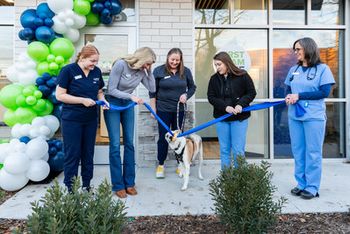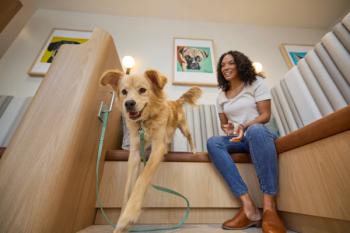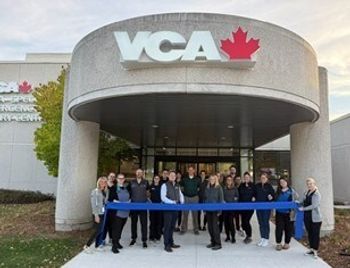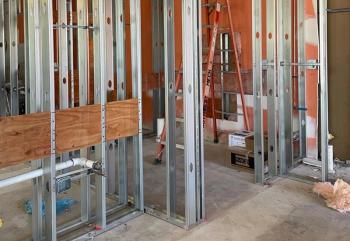
Green practice Q&A
Dr. Bruce Jens, hospital administrator for Veterinary Specialty and Emergency Care, answered our burning questions about his practice's green project.
Was there a lot of additional cost and time involved in building green?
There wasn't a huge additional cost for the environmental upgrades—and many of those will pay for themselves in a few years through savings on energy costs. Where the cost comes in is time spent planning and understanding what you're doing. We did complete and file the paperwork for our LEED registration, but it wasn't an enormous amount of extra work.
Reception area: This room faces north so front office employees don't have to deal with excessive glare on computer screens.
How would you advise others who want to build green?
Work with designers or builders who know what they're doing and who use environmentally friendly systems during the process. For example, what do they do with waste and wrappings? How do they reduce waste?
How do you perform due diligence on a firm that claims to be environmentally friendly?
Get your goals in mind, then interview different groups to make sure their views and goals match up with yours. Check references, and see if any of these groups have worked with an organization such as the U.S. Green Building Council or Green Globes. Does the firm have a dedicated staff member such as a LEED-certified point person? Once you're confident that it's a legitimate group, then it's the firm's job to follow through.
Did you have to give up anything to be green?
We haven't had to sacrifice technology, and we're not in a log cabin or grass hut living off the land. One employee recently said to me, "We're state of the art." In fact, being state of the art helps us to be more green through aspects such as paperless recordkeeping and digital radiography. We do have to be smart about the materials and appliances we buy, but the Energy Star designation helps us choose right.
How has the community responded to your building?
We're just now starting to earnestly market the green aspect of the project to the community. After a year, the staff is now educated and familiar with all our environmentally friendly features. Team members can talk with clients knowledgeably about what they've seen and experienced in the hospital and why it makes a difference. We're planning an open house to get the word out: "We've built green, come and see what it's like."
If someone wants to be more green in practice, where do they start?
There are so many things you can do to be green—you don't have to be LEED-certified. Change your light bulbs from incandescent to fluorescent and place lighting only where you need it. Check with Energy Star and local organizations about what they recommend. If you want to do a larger overhaul, interview several firms and find someone who understands your environmental goals and the way your building needs to function.
What resources do you recommend?
Great places to start are the U.S. Green Building Council (
Newsletter
From exam room tips to practice management insights, get trusted veterinary news delivered straight to your inbox—subscribe to dvm360.




